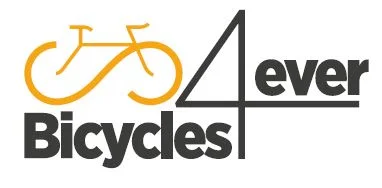How To Train Without Expensive Tech with GCN
Source: GCN Youtube Channel: How To Train Without Expensive Tech
Video How To Train Without Expensive Tech with Global Cycling Network
Video How To Train Without Expensive Tech with Global Cycling Network YouTube Channel.
How To Train Without Expensive Tech
Global Cycling Network
Introduction
Training for cycling has changed significantly in recent years, with the advent of data-driven insights through power meters and heart rate monitors. These tools provide valuable information about a rider’s performance and help them pace their efforts more effectively. However, it’s important to remember that not too long ago, riders didn’t have access to any data and still managed to improve their performance. In this article, we will discuss some tips for training without data and how to make significant improvements in your cycling performance without relying on technological aids.
Training with a Purpose
Before delving into the tips for training without data, it’s essential to consider the purpose of your training. If your goal is simply to become more active and incorporate more rides into your routine, you may not necessarily need data. Tracking your rides using a basic app like Strava, which provides information on distance, duration, and other basic metrics, can be motivating without requiring advanced data tracking.
Keeping a Training Diary
Even if you don’t have access to sophisticated data tools, maintaining a training diary can be immensely helpful. Recording the details of each ride, including distance, duration, and difficulty, can provide valuable insights into your progress and help you identify trends over time. You can also rate each ride on a scale of 1 to 10 based on its difficulty, which will enable you to gauge your improvements and make necessary adjustments to your training plan.
Setting Goals
Having clear goals in mind can be a powerful motivator for training without relying on data. A written diary can also serve as a tool for planning your training schedule and ensuring consistency in your riding. By setting specific goals and tracking your progress towards them, you can stay motivated and focused on your training.
Pacing Long Efforts
Without access to data, pacing longer efforts of 10, 20, or 30 minutes can be challenging. However, using longer climbs or flats to gauge your effort can help you learn to pace yourself effectively. Experimenting with different intensities and learning how your body responds without relying on data can enhance your ability to pace and plan tactics in your riding.
Adding Intensity to Rides
Focusing on shorter efforts is an effective way to elevate the intensity of your rides without data. Seated efforts for 1-2 minutes or short climbs can be used to challenge yourself and push your limits. Experimenting with alternating efforts, such as the “up and over” technique, can help you gauge your capabilities without relying on data-driven insights.
Incorporating Cadence Work
Integrating cadence work into your training can improve your strength and pedaling technique. By focusing on lower cadence revolutions per minute (RPM) and gradually increasing the duration of these efforts, you can build strength and improve your riding capabilities without the need for data or advanced metrics.
Testing Yourself Over Time
Even without access to data, regularly testing yourself on familiar stretches of road or climbs can provide valuable feedback on your progress. Timing your efforts and recording your results can help you track your improvements and stay focused on your training goals. Monitoring your progress over time is crucial in gauging the effectiveness of your training without relying on data.
Gradually Increasing Intensity
When training without data, it’s important to gradually increase the intensity and volume of your riding. Planning your training around incremental increases in difficulty and duration can prevent burnout and allow you to make sustainable progress towards your goals.
Conclusion
Training without data can be a rewarding and effective approach to improving your cycling performance. By keeping a detailed training diary, setting clear goals, and incorporating various training techniques, cyclists can make significant strides in their riding capabilities without relying on advanced data-driven insights. Ultimately, the joy of pushing oneself on the bike and striving for new achievements can be immensely gratifying, regardless of the absence of technological aids. In the end, the most important factor in training is dedication and a passion for the sport.
The opinions expressed in this space are the sole responsibility of the YouTube Channel Global Cycling Network and do not necessarily represent the views of CicloNews.

